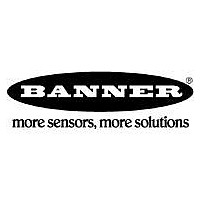STBVP6-RB1E02 BANNER ENGINEERING, STBVP6-RB1E02 Datasheet - Page 4

STBVP6-RB1E02
Manufacturer Part Number
STBVP6-RB1E02
Description
Safety; Duo-Touch; Run Bar System; LED Indicator; 2 NC Safety Contacts
Manufacturer
BANNER ENGINEERING
Datasheet
1.STBVP6-RB1E02.pdf
(16 pages)
Specifications of STBVP6-RB1E02
Function
Proximity
Primary Type
Photoelectric
Sensing Mode
Through-Beam
Technology
Photoelectric
Appropriate Applications
The DUO-TOUCH Run Bar is intended for use as the initiation device in a two-hand
control system for most powered machinery, when machine cycling is controlled by an
individual.
The two-hand control system makes the operator a “hostage” while the hazard is present,
thus limiting or preventing exposure of that operator to the hazard (see Warning at
right). The two-hand control actuators must be located in a way that hazardous motion
is completed or stopped before the operator can release one or both of the buttons and
reach the hazard (see Separation Distance on page 6).
Two-hand control systems must meet requirements found in several U.S. and
international standards. See the machine-specific standard (e.g., “C-level” in ISO/EN
standards), ANSI NFPA 79, IEC 60204-1, ANSI B11.19, and ISO 13851 (EN 574) for
complete information. Some of the requirements are:
• Simultaneous use of both hands (“synchronous action”): both buttons must be
• Continuous actuation of both buttons during the hazardous situation. Releasing one
• When used in single-cycle or single-stroke mode, the machine control must provide
• The actuating devices must be protected from accidental or unintended operation.
• When used for safeguarding, the interfacing must be at an appropriate level of safety
To assist in complying with the above requirements, Banner Engineering recommends
interfacing the STB buttons of the run bar with a DUO-TOUCH SG Two-Hand Control
Module, such as the model AT-FM-10K, AT-..M-13A, or AT-..M-11KM, or other
Type IIIC-compliant two-hand control system. See Warnings on front page and at right.
DUO-TOUCH
4
actuated within 500 ms of one another, even under single-fault conditions. Whenever
this time is exceeded, both actuating devices must be released. This requirement
reduces the possibility of intentional defeat and unintended initiation.
or both buttons must cause the ceasing of the hazardous situation, and before the
machine cycle can continue, both buttons must be released.
an anti-repeat feature so that the operator must release the two-hand control
actuators after each machine cycle, before a new cycle can be initiated.
circuit integrity as determined by a risk assessment. In the U.S., the required level
of integration is Control Reliability (see ANSI B11.19). In many situations governed
by ISO/IEC and EN regulations, the required integration for Type IIIC per ISO 13851
(EN 574) is Category 4 per ISO 13849-1 (EN 954-1).
P/N 131634 rev. B
®
Run Bar with STB Buttons
Banner Engineering Corp. • Minneapolis, MN U.S.A.
www.bannerengineering.com • Tel: 763.544.3164
hand controls are installed must not
adversely affect the means of actuation.
Severe contamination may cause slow
response or false ON conditions of
mechanical palm/push buttons or STB
buttons. This may result in exposure to
a hazard.
When properly installed, a two-hand-control
system using STB Touch Buttons as the
actuating devices pro vides pro tec tion only
for the hands of the machine operator. It
may be necessary to install other guarding
devices, such as safety light screens and/
or hard guards, to protect per son nel from
haz a rd o us ma c hin e ry. Fail ure to install
appropriate point-of-operation guards
on haz ard ous ma chin ery can result in a
dan ger ous con di tion which could lead
to serious injury or death.
WARNING . . .
of-Operation Guarding
CAUTION . . .
Hand Controls
The environment in which
Point-















